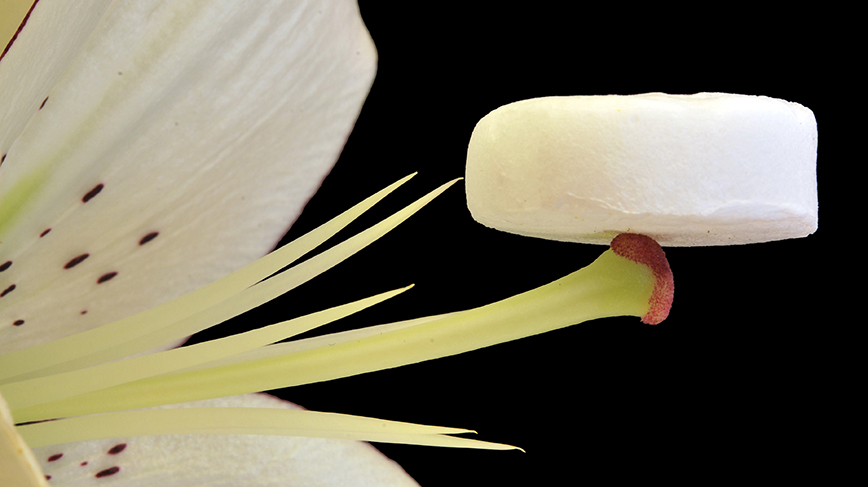With a kitchen freezer and plant cellulose, a material for therapeutics is developed

A new low-cost and sustainable technique would boost the possibilities for hospitals and clinics to deliver therapeutics with aerogels, a foam-like material now found in such high-tech applications as insulation for spacesuits and breathable plasters.
With the help of an ordinary kitchen freezer, this newest form of aerogel was made from all natural ingredients, including plant cellulose and algae, says Jowan Rostami, a PhD student in the at KTH’s Department of Fiber and Polymer Technology .
Rostami says that the aerogel’s low density and favorable surface area make it ideal for a wide range of uses, including timed release of medication and wound dressing.
The advance was reported in the scientific journal, Materials Today, by researchers from the Department of Fiber and Polymer Technology at KTH, the Department of Engineering Mechanics at KTH, the Wallenberg Wood Science Centre at KTH, and the Division of Solid Mechanics at Lund University.
The aerogel’s density could be pushed down to as low levels as 2kg per cubic meter, which her research team believes is among the lowest recorded densities for similar materials, she says.
“To give you an idea of how light that is—the density of air is 1.23 kg per cubic meter.”
Proof of concept
In order to demonstrate that the material can be used for controlled delivery of therapeutics., the researchers attached proteins to the aerogel through a water-based self-assembly process.
“The aerogel is designed for biointeractivity, so it can for example be used to treat wounds or other medical problems,” Rostami says.
Nearly as light as air
With an air volume of up to nearly 99.9 percent, aerogels are super-lightweight yet durable (the KTH aerogel is nearly 99 percent air). They’ve been used in a wide range of products since the mid-20th century, from skin care to paint, and numerous materials for building construction.
Technical advances have enabled aerogels from plant cells—or cellulose nanofibrils—which have generated interest for environmental applications such as water purification and home insulation. The basic process for nanocellulose-based aerogels involves dispersing nanofibrils in water, and then drying out the mixture.
But the steps along the way are energy-intensive and time-consuming, in part because they require freeze drying or critical-point drying with CO2 gas.
Simple, sophisticated and sustainable
“We use a sustainable approach instead,” Rostami says. “It’s simple yet sophisticated.”
The fibrils are mixed in water with alginate—a naturally occurring polymer in seaweed—and then calcium carbonate is added. In the freezer, the water turns to ice and compresses these components together, rendering a frozen hydrogel.
The frozen hydrogel is removed from the freezer and placed in acetone, which not only removes water and evaporates quickly, but by adding a bit of acid to the acetone, it dissolves the calcium carbonate particles and releases CO2—generating the bubbles that could make the material more porous.
The dissolution of calcium carbonate enables yet another benefit: it releases calcium ions which crosslink with the alginate and CNFs, giving the aerogel wet-stability and its ability to recover its shape after being suffused with liquid.
Rostami says this quality further adds to the aerogel’s usefulness in more applications, “without using costly, time and energy-consuming processes, toxic chemicals or complicated chemistry.”
Also contributing to the research was Göksu Cinar Ciftci. The project was funded by Vetenskapsrådet (the Swedish Research Council), Grant number 2018-05060.
David Callahan
